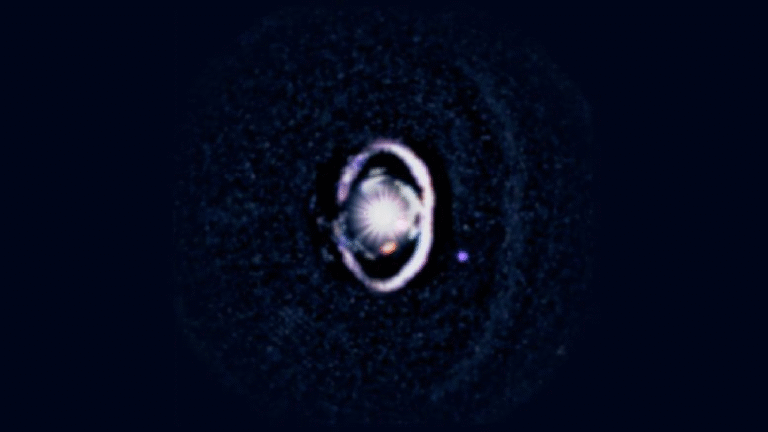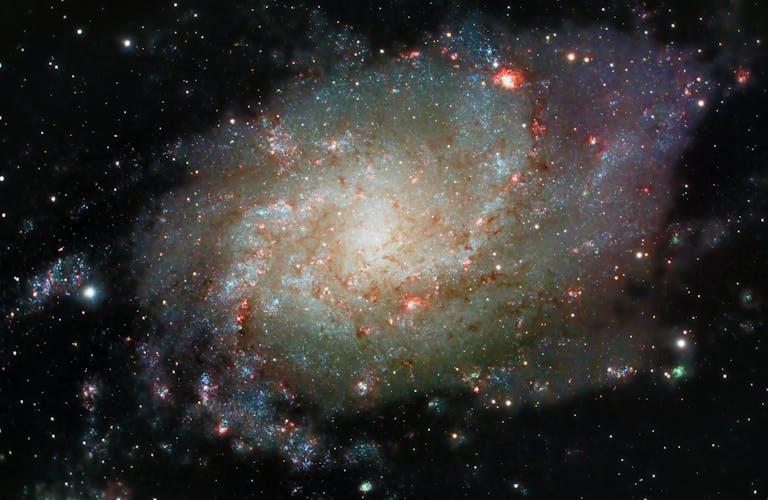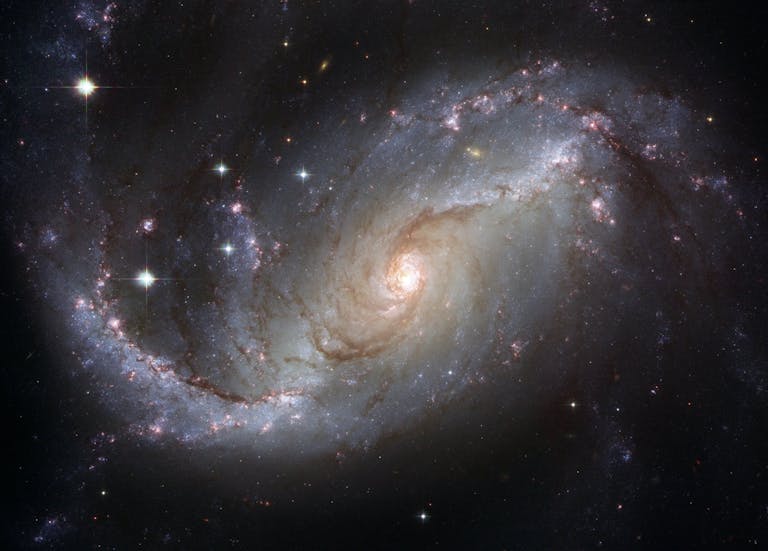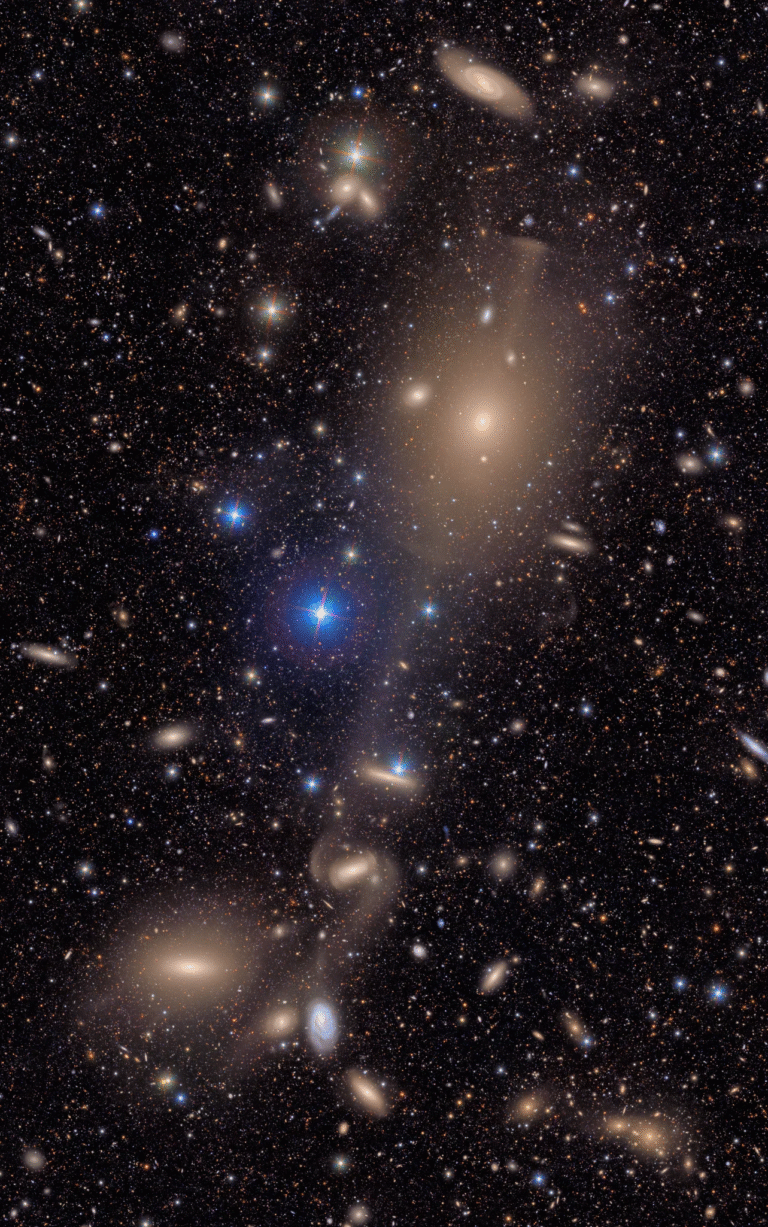XRISM Detects a Slow, Dense Cosmic Wind From a Neutron Star – and It’s Changing What We Know About the Universe

A new discovery by the XRISM (X-Ray Imaging and Spectroscopy Mission) has given astronomers something unexpected to think about. When researchers pointed the spacecraft’s Resolve instrument at the neutron star system GX13+1, they expected to see the kind of high-speed winds that are usually launched when matter falls onto compact objects. Instead, they found something very different — a slow, thick, fog-like outflow that challenges what scientists thought they knew about how cosmic winds work.
The Discovery That Surprised Everyone
On February 25, 2024, XRISM’s Resolve instrument observed GX13+1, a neutron star that’s the collapsed core of a once-massive star. GX13+1 is a bright X-ray source, fueled by an accretion disc — a swirling flow of hot gas that gradually spirals onto the neutron star’s surface.
When this observation took place, GX13+1 suddenly brightened. It reached, or possibly exceeded, a physical limit known as the Eddington limit — the point where the outward pressure from radiation equals the inward pull of gravity. Beyond this limit, the system’s radiation is so strong that it can blow matter away in a massive outflow, often called a cosmic wind.
But this time, things didn’t go as expected. Instead of producing a fast, clumpy wind like those seen around supermassive black holes, GX13+1 generated a slow and smooth flow — something that looked more like a dense cosmic fog.
A Slow but Powerful Outflow
The wind XRISM detected was incredibly thick, dense enough to block much of the X-ray light coming from the neutron star itself. It’s what astronomers call Compton thick, meaning that even high-energy photons struggle to pass through it.
However, its speed was a surprise — only about 1 million kilometers per hour, which sounds fast until you realize that’s just 0.1% the speed of light. By comparison, winds from supermassive black holes at similar luminosity levels can blast outward at up to 30% of the speed of light, or over 200 million kilometers per hour.
The researchers described it as if they were “looking at the Sun through a bank of fog.” Everything dimmed, but the underlying activity didn’t stop — it just became harder to see.
XRISM: The Mission Behind the Discovery
XRISM is a joint mission led by JAXA (Japan Aerospace Exploration Agency) in collaboration with NASA and the European Space Agency (ESA). It was launched on September 7, 2023, to study the high-energy universe in unprecedented detail.
The spacecraft carries two main instruments:
- Resolve, an X-ray calorimeter capable of measuring the energy of individual X-ray photons with extreme precision.
- Xtend, a large-field X-ray CCD camera that captures broad images of the surrounding sky.
Together, these instruments allow scientists to look deep into the heart of galaxy clusters, black holes, supernova remnants, and now, neutron star systems like GX13+1.
Resolve’s ability to distinguish tiny differences in X-ray photon energy — what astronomers call energy resolution — made it possible to detect the subtle spectral signatures of the slow-moving gas around the neutron star.
Why This Discovery Matters
This result isn’t just an oddity. It might change the way scientists understand how matter and energy move around compact objects like neutron stars and black holes.
Typically, when matter spirals inward toward a compact object, it forms an accretion disc. The intense radiation and heat generated in the process can drive some of that material outward as powerful winds. These winds, in turn, shape the environment around the object — redistributing gas, triggering or halting star formation, and even influencing the evolution of galaxies.
In the case of GX13+1, the wind’s behavior didn’t fit existing models. If the system was really at or above the Eddington limit, theory predicts that radiation pressure should have launched a fast, clumpy, high-speed wind. Instead, XRISM saw something much slower but far denser — a smooth, stratified flow of gas.
That unexpected difference could mean that temperature — not just radiation pressure — plays a crucial role in driving cosmic winds.
Temperature: The Missing Piece
The research team behind the Nature paper suggests that the answer might lie in the temperature of the accretion disc.
Accretion discs around supermassive black holes are much larger and cooler than those around stellar-mass systems like GX13+1. Even though they produce far more light overall, that light is spread over a bigger area, and much of it is emitted as ultraviolet (UV) radiation rather than X-rays.
By contrast, neutron stars and smaller black holes generate hotter, X-ray–emitting discs. And here’s where it gets interesting:
- Ultraviolet light interacts with matter more efficiently than X-rays. It can push on atoms and ions through line absorption, effectively “grabbing” the gas and flinging it outward.
- X-rays, however, are so energetic that they strip atoms of their electrons entirely. That makes it harder for them to transfer momentum to the gas — meaning X-ray–driven winds tend to be slower but denser.
This could explain why the outflow in GX13+1 was so thick yet so slow. The radiation had enough power to lift matter off the surface of the disc, but not enough to accelerate it to ultra-fast speeds.
A “Stratified” Wind
The team refers to this phenomenon as a stratified wind — meaning the outflow isn’t a single uniform stream, but rather layered, with different zones of density, temperature, and ionization.
Such structure suggests that the wind may originate from multiple regions of the accretion disc, not just from one narrow ring near the neutron star. It could also mean that parts of the wind are being shaped by different physical mechanisms — radiation pressure in some layers, thermal expansion in others.
This complexity is crucial because it tells us that cosmic winds are not one-size-fits-all. Even within similar systems, their structure and dynamics can vary dramatically depending on temperature, radiation type, and geometry.
Why Cosmic Winds Matter for the Universe
Cosmic winds aren’t just side effects of accretion — they’re major drivers of change in the universe.
In galaxies, winds from supermassive black holes can compress interstellar gas to form new stars or, conversely, heat and scatter that gas to shut star formation down. Astronomers call this process feedback, and it plays a key role in determining how galaxies grow and evolve over billions of years.
By studying winds in smaller systems like GX13+1, scientists get a closer and clearer view of the physics behind feedback on a cosmic scale. Since neutron stars are closer and easier to observe than distant black holes, they act as natural laboratories for understanding the same processes at play across the universe.
The Broader Impact of XRISM’s Findings
This discovery also has big implications for the next generation of X-ray observatories, like Athena (Advanced Telescope for High ENergy Astrophysics) — an ESA-led mission planned for the 2030s. Athena will combine a large X-ray telescope with cutting-edge instruments designed to answer key questions about how ordinary matter forms structures like galaxies and how black holes influence their cosmic environments.
XRISM’s data from GX13+1 acts as a stepping stone. It shows what can be achieved with ultra-high-resolution X-ray spectroscopy and highlights the kinds of puzzles future missions will need to solve.
A Reminder That the Universe Is Still Full of Surprises
One of the most exciting aspects of this finding is how accidental it was. The XRISM team hadn’t planned to catch GX13+1 at its brightest moment — the timing just happened to align. A few days before the scheduled observation, the neutron star system suddenly flared up, offering a rare opportunity to see what happens when a compact object pushes its radiation output to the limit.
The result: a thick, fog-like wind unlike anything astronomers had seen before from such a system.
This observation forces astrophysicists to rethink how radiation, temperature, and matter interact under extreme conditions. It shows that even when theory seems solid, the universe still has a way of surprising us with its complexity.
Looking Ahead
Future XRISM observations will likely focus on other neutron stars and stellar-mass black hole binaries to see if the same slow, dense winds appear elsewhere. Comparing these results to winds from active galactic nuclei (AGN) — powered by supermassive black holes — will help refine our models of how matter behaves under intense radiation.
Researchers are particularly interested in whether the stratified, slow outflow seen in GX13+1 is unique to neutron stars or a more general feature of accretion physics. If temperature and radiation spectrum really do control wind behavior, it could unify our understanding of everything from small X-ray binaries to the gigantic engines at the centers of galaxies.
For now, the discovery stands as a reminder that the cosmos is not just vast — it’s subtle, dynamic, and full of hidden layers.
Reference:
Stratified wind from a super-Eddington X-ray binary is slower than expected – XRISM Collaboration, Nature (17 September 2025). Read the study here.





